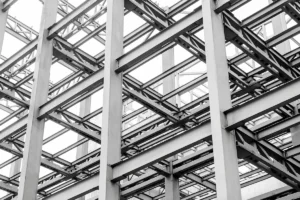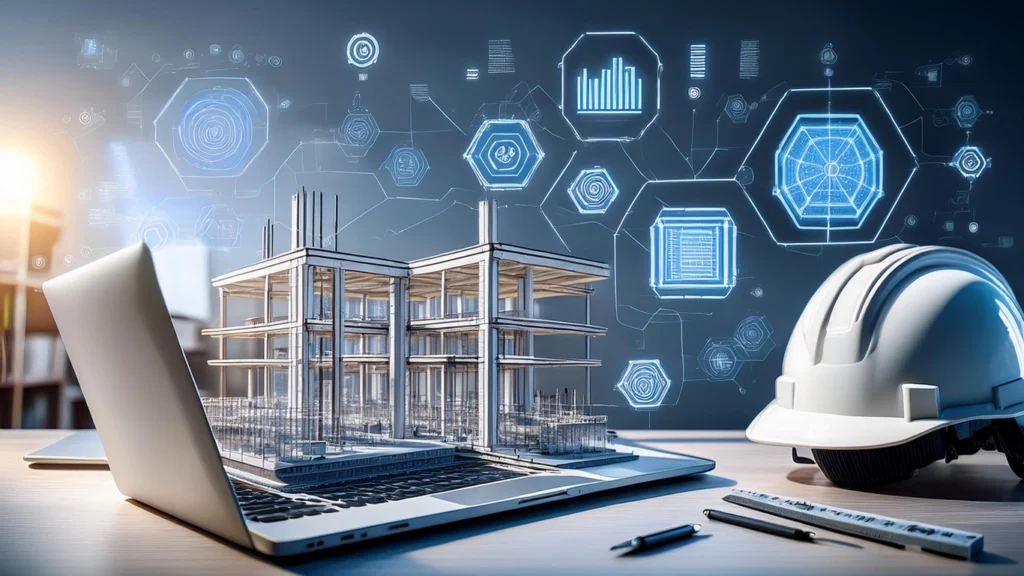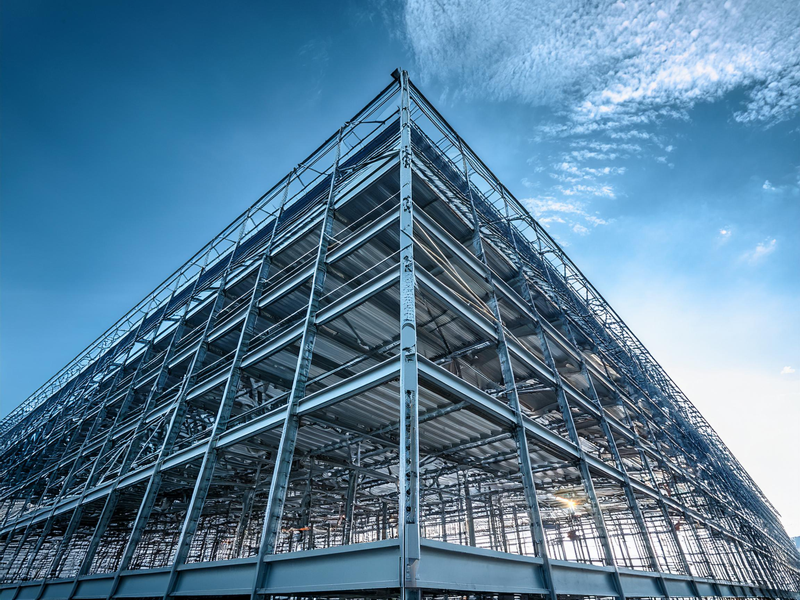Innovations in Structural Design Techniques
Published Date
Last Modified

- Innovations in Structural Design Techniques
- Innovations in Structural Design Techniques
- The Evolution of Structural Design
- Key Drivers of Innovations in Structural Design Techniques
- Cutting-Edge Structural Analysis Tools
- Design Optimization: Balancing Efficiency and Cost
- Sustainable Building Design Principles
- The Role of BIM in Modern Structural Design
- 3D Printing and Digital Fabrication: The Future of Construction
- Smart Materials and Adaptive Structures
- Seismic Design and Resilience in Architecture
- Conclusion: The Future of Structural Design
Innovations in Structural Design Techniques
Recent advancements in structural engineering emphasize Innovations in Structural Design Techniques.
Advancements in structural design methods provide advantages for both constructors and final users.
Understanding Innovations in Structural Design Techniques is essential for future-proofing constructions.
Advancements in structural design methods are essential for developing efficient and sustainable structures.
In our examination of advancements in structural design methods, we uncover fresh approaches to longstanding challenges.
Integrating advancements in structural design methods results in safer and more dependable buildings. Advancements in structural design methods propel the progress of contemporary architecture.
These advancements in structural design methodologies demonstrate a dedication to achieving excellence within the industry. Advancements in Structural Design Techniques are reshaping the standards of construction practices.
The increasing focus on innovative structural design methods is essential for maintaining a competitive edge. Advancements in structural design methods address the evolving needs of urban development. Investigating advancements in structural design methods can result in revolutionary findings. Advancements in structural design methodologies offer crucial insights for upcoming projects.
Advancements in structural design methodologies are transforming our approach to construction and infrastructure development. These advancements in structural design methods are greatly enhancing design efficiency. These advancements in structural design methods guarantee the durability and security of buildings. Through Innovations in Structural Design Techniques, engineers are now able to create more resilient buildings. Advancements in structural design methods are crucial for addressing contemporary architectural requirements. Advancements in structural design methods promote a progressive approach in engineering practices.
Adapting Innovations in Structural Design Techniques can significantly enhance project outcomes. Incorporating these advancements in Structural Design Techniques is vital for sustainable development. Innovations in Structural Design Techniques are not just trends; they are essential for future success. By focusing on Innovations in Structural Design Techniques, we can enhance safety and effectiveness. The impact of Innovations in Structural Design Techniques will continue to grow in the coming years.
Understanding and leveraging these Innovations in Structural Design Techniques is crucial for all stakeholders. Innovations in Structural Design Techniques are instrumental in achieving project sustainability goals.
The integration of Innovations in Structural Design Techniques contributes to building a better future. Many professionals are leveraging Innovations in Structural Design Techniques to push the boundaries of construction. Innovations in Structural Design Techniques facilitate collaboration across various engineering disciplines. We will examine specific Innovations in Structural Design Techniques that have emerged recently. Understanding Innovations in Structural Design Techniques is vital for effective project management.
Innovations in Structural Design Techniques lead to enhanced safety standards in construction. As we delve deeper into these Innovations in Structural Design Techniques, we will uncover their impact. Innovations in Structural Design Techniques are transforming the way we visualize and implement projects. Through Innovations in Structural Design Techniques, we can achieve greater efficiency in resource use. Innovations in Structural Design Techniques also play a significant role in reducing costs and waste.
Innovations in Structural Design Techniques are crucial for the future of architecture and engineering. Many groundbreaking projects are fueled by Innovations in Structural Design Techniques. Innovations in Structural Design Techniques ensure resilience and safety in modern architecture. These Innovations in Structural Design Techniques are often inspired by nature and advanced technology. Understanding Innovations in Structural Design Techniques can dramatically affect project outcomes.
To understand the future, we must first grasp the role of Innovations in Structural Design Techniques. Innovations in Structural Design Techniques are paving the way for sustainable building practices These Innovations in Structural Design Techniques enhance structural integrity and performance.
Innovations in Structural Design Techniques will continue to evolve as technology advances. By exploring these Innovations in Structural Design Techniques, we can anticipate future trends in engineering. Innovations in Structural Design Techniques are essential for addressing modern construction challenges.
Engineers must incorporate Innovations in Structural Design Techniques in their practices to remain relevant. Furthermore, Innovations in Structural Design Techniques help to meet regulatory requirements effectively. Ultimately, Innovations in Structural Design Techniques are shaping the future of the construction industry.
Innovations in Structural Design Techniques also emphasize sustainability and environmental responsibility. Engineers must stay updated on Innovations in Structural Design Techniques to remain competitive.
Innovations in Structural Design Techniques create opportunities for groundbreaking projects. Many professionals rely on Innovations in Structural Design Techniques to enhance safety.
Innovations in Structural Design Techniques have led to an increase in high-rise buildings. Utilizing Innovations in Structural Design Techniques can streamline construction processes.
Innovations in Structural Design Techniques are essential for disaster resilience. Strategies involving Innovations in Structural Design Techniques can significantly reduce costs.
Innovations in Structural Design Techniques foster collaboration across disciplines. Structural design is a cornerstone of the construction industry. It ensures that buildings can withstand various loads and forces. Innovations in Structural Design Techniques contribute to aesthetic value in buildings.
In recent years, this field has seen remarkable innovations. These advancements are driven by the need for safer, more efficient, and sustainable buildings.
This article delves into the latest trends and technologies in structural design. We’ll explore how these innovations shape the future of building design, structural analysis, and design optimization.
We’ll also discuss the importance of adhering to design principles, which ensure safety, efficiency, and sustainability in construction. We aim to highlight the most impactful Innovations in Structural Design Techniques throughout this article.
Innovations in Structural Design Techniques are significantly influenced by global trends. Adopting Innovations in Structural Design Techniques is vital for modern architects.
Innovations in Structural Design Techniques are pushing the boundaries of what’s possible in construction. These Innovations in Structural Design Techniques reflect a new era of engineering.
We will examine various Innovations in Structural Design Techniques throughout this discussion. Innovations in Structural Design Techniques serve a crucial role in enhancing construction quality.
The future of architecture will heavily rely on Innovations in Structural Design Techniques. Through Innovations in Structural Design Techniques, we can achieve remarkable feats in engineering. Whether you’re a structural engineer, architect, or simply interested in the construction industry, this article will provide valuable insights.
Join us as we explore the innovations in structural design techniques.
The Evolution of Structural Design
Structural design has a rich history, marked by continuous advancements. It has evolved from simple techniques to complex methodologies.
Early structural designs were rudimentary, relying on basic materials and methods. Over time, innovations began transforming the field dramatically.
The Industrial Revolution introduced new materials and construction techniques. Steel and reinforced concrete became common, allowing for taller and more resilient structures.
In recent decades, digital tools and computational methods have revolutionized structural design. These tools enable more precise modelling and simulation of structural behaviour.
Key milestones in the evolution of structural design include:
- The transition from classical materials to modern composites.
- The incorporation of computer-aided design (CAD) systems.
- The development of Building Information Modeling (BIM) technologies.
These advancements have enhanced the accuracy and efficiency of structural designs. As a result, today’s buildings are not only stronger but also aesthetically pleasing.
The journey of structural design reflects human ingenuity and the relentless pursuit of innovation. As new challenges arise, we can expect continued evolution.
Key Drivers of Innovations in Structural Design Techniques
The quest for safer and more efficient structures drives innovations in structural design techniques. This demand pushes engineers to explore new methodologies continuously.
Sustainability is a major catalyst in this field today. It encourages the use of eco-friendly materials and green building practices. These innovations aim to reduce the environmental footprint of construction projects significantly.
Another key driver is the advancement of technology. Tools like finite element analysis allow engineers to model structural loads and stresses with great precision. This technological evolution enhances the reliability and safety of designs.
The need for resilience also spurs innovation. Urbanization requires structures that can withstand natural disasters, prompting research into seismic design techniques and adaptive structures.
Lastly, cost-effectiveness remains a significant factor. Engineers must optimize designs to balance structural integrity with material and labour costs. Design optimization techniques help achieve this balance by improving efficiency without sacrificing quality.
These drivers collectively shape the future of structural engineering, paving the way for innovative and sustainable built environments. As these trends continue, the industry will face both opportunities and challenges requiring forward-thinking approaches.
Cutting-Edge Structural Analysis Tools
Structural analysis has reached new heights with cutting-edge tools. Advanced software now models complex forces within structures with remarkable precision. These tools make it easier to predict how different elements will behave under various conditions.
The use of finite element analysis (FEA) is widespread in modern structural design. FEA divides large structures into manageable elements for detailed examination. This method provides insights into stress distribution and potential failure points.
Additionally, computational fluid dynamics (CFD) tools simulate the effects of wind and other forces. Engineers utilize CFD to optimize the aerodynamic performance of tall buildings. Such tools are crucial for designing structures that stand firm against environmental loads.
Real-time data analysis further enhances structural evaluations. Sophisticated sensors relay information about a building’s health, aiding in maintenance and operation. This proactive approach minimizes risks and extends the lifespan of structures, ensuring safety and efficiency for users.
Design Optimization: Balancing Efficiency and Cost
Design optimization in structural engineering seeks the perfect balance between efficiency and cost. This process reduces material use while ensuring safety and performance. Engineers apply advanced algorithms to explore thousands of design permutations.
The principles of optimization involve refining design choices for maximum impact. By adjusting parameters, engineers can achieve the ideal cost-to-benefit ratio. This careful balancing act often leads to innovative solutions that might not be initially obvious.
Moreover, optimization involves evaluating both short-term and long-term costs. Initial construction savings can sometimes lead to higher operating costs over time. Hence, engineers must consider the complete lifecycle of the building when optimizing designs.
Collaborating with architects often enhances optimization efforts. Together, they ensure that both aesthetic and structural needs align. This teamwork results in buildings that are not only practical and durable but also visually appealing and cost-effective.
Sustainable Building Design Principles
Sustainability in building design extends beyond reducing energy use. It involves a holistic approach to minimizing environmental impact. Structural engineers play a key role in this effort through material selection and design innovation.
Materials like recycled steel and cross-laminated timber are gaining traction. These materials offer both structural integrity and sustainability. They help reduce carbon footprints while maintaining high performance.
Incorporating natural elements is also important. Strategies such as daylighting and passive ventilation enhance indoor environments. These techniques reduce reliance on artificial lighting and mechanical systems, creating healthier spaces.
Sustainable design principles also prioritize future adaptability. Buildings need to accommodate changes in use and technology over time. This forward-thinking approach ensures structures remain functional and relevant. By applying these principles, architects and engineers help create a more sustainable built environment. This benefits both people and the planet.
The Role of BIM in Modern Structural Design
Building Information Modeling (BIM) has revolutionized structural design. It integrates data and geometry into a unified digital model. This transformation enhances collaboration among stakeholders.
BIM provides a comprehensive view of the project lifecycle. It allows engineers to simulate and analyze structural performance early on. This reduces the likelihood of design flaws and costly revisions.
With BIM, project efficiency improves significantly. Errors are detected in the design phase, minimizing construction delays. Resources are optimized, and waste is reduced, benefiting both the project timeline and budget.
Additionally, BIM supports sustainable practices by providing data-driven insights. Engineers can assess the environmental impact of materials and systems. This approach aligns with the growing emphasis on green building standards. By leveraging BIM, structural engineers ensure projects are efficient, sustainable, and resilient. This technology continues to shape the future of construction design and execution.
3D Printing and Digital Fabrication: The Future of Construction
3D printing is transforming construction by enabling innovative architectural designs. This technology allows the creation of complex geometries not possible with traditional methods. As a result, architects have greater creative freedom in their designs.
Digital fabrication offers precision and efficiency in producing building components. With computer-controlled processes, the risk of human error is significantly reduced. This enhances the overall quality and consistency of structural elements.
The adoption of 3D printing leads to reduced material waste during construction. Components are manufactured with exact specifications, promoting sustainable practices. This method contributes to the growing demand for eco-friendly construction solutions.
Moreover, 3D printing accelerates the construction timeline. Structures can be assembled quickly from prefabricated parts produced off-site. As this technology evolves, it will play a crucial role in tackling global urbanization challenges. It offers a vision of smarter and faster construction in the future.
Smart Materials and Adaptive Structures
Smart materials are transforming structural design with their ability to respond to environmental changes. These materials can enhance building performance and energy efficiency. For instance, some can adjust their properties based on temperature or humidity.
Adaptive structures incorporate these smart materials to change shape or properties. This adaptability offers dynamic solutions to meet various design challenges. For instance, they can help in creating buildings that withstand different weather conditions.
The concept of self-repair is another innovative use of smart materials. Structures made with these materials could potentially heal minor damages themselves. This capability promises to reduce long-term maintenance and repair costs.
Such advances in material science herald a new era for construction. These innovations not only improve structural resilience but also pave the way for more sustainable building practices. As smart materials continue to develop, they promise increased efficiency and longevity of future structures.
Seismic Design and Resilience in Architecture
Earthquakes pose significant risks to buildings, making seismic design vital. Modern techniques aim to minimize damage during seismic events. Structural engineers are now using advanced methods to enhance resilience.
Innovations focus on absorbing and dissipating seismic energy to safeguard buildings. Base isolation and energy dissipators are popular techniques being adopted. These innovations are helping to protect lives and reduce damage costs.
Earthquake-prone regions see rapid adoption of these technologies. Modern materials and structural systems are also improving overall safety. For example, advanced damping systems are now standard in seismic design.
Beyond safety, these improvements promote sustainability in construction. Buildings can recover faster from earthquakes, reducing waste and promoting reuse. The emphasis on resilience highlights the importance of future-ready buildings.
Conclusion: The Future of Structural Design
The world of structural design is ever-evolving. Innovations are paving the way for safer and more sustainable buildings. New technologies and materials lead this transformation.
Our future will see buildings that are not only strong but also adaptable. They will withstand stresses while reducing environmental impact. The integration of advanced tools like BIM and AI will further streamline design processes.
With these advancements, the role of structural engineers continues to expand. Collaboration across disciplines is crucial for success. By embracing change, the industry is set to achieve remarkable feats in structural engineering.
You may be interested in our related post: How to choose a BIM Outsourcing Partner

